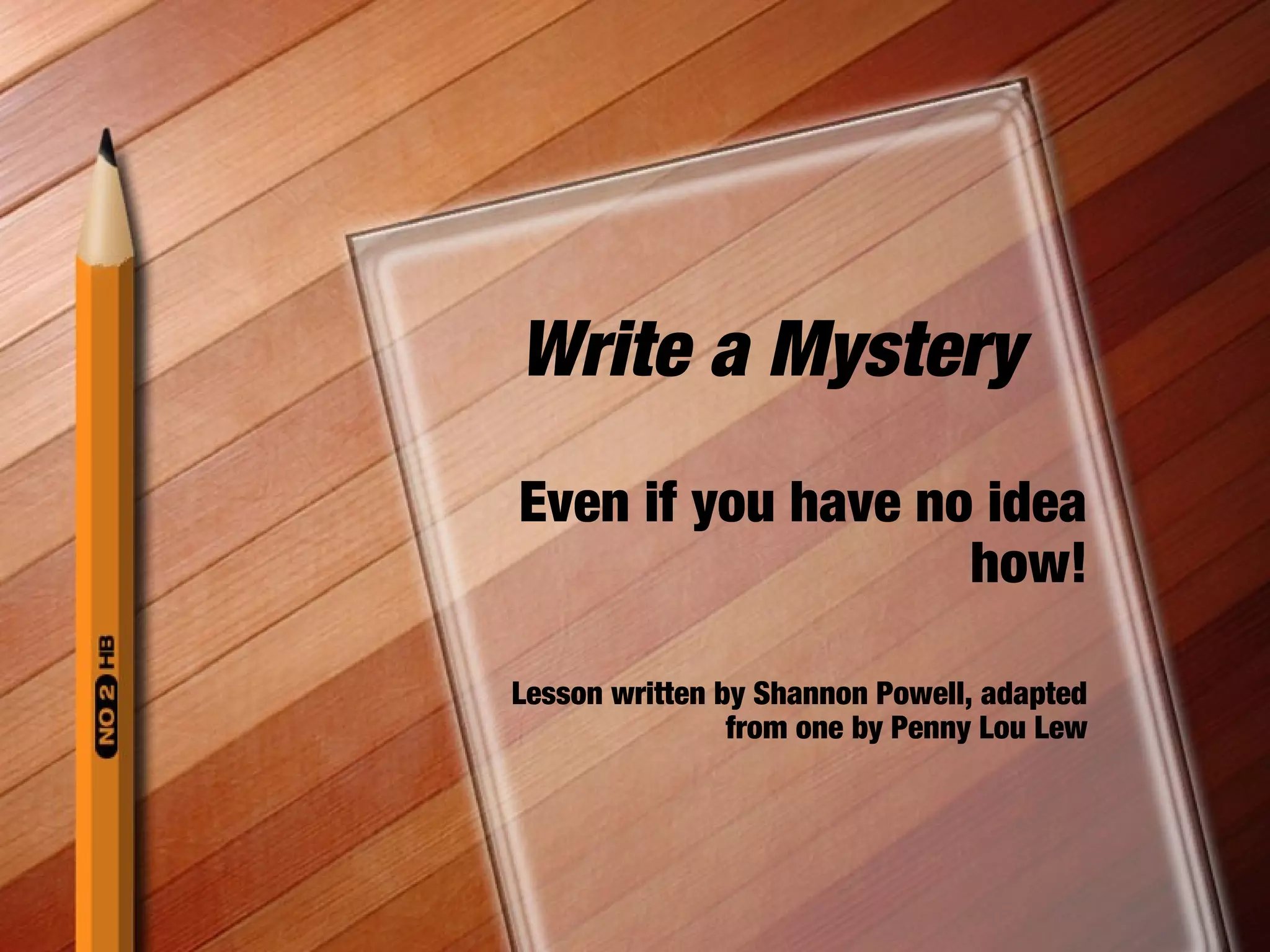This document provides a guided outline for writing a mystery story in 17 steps. It prompts the writer to describe scenes such as arriving home from school, receiving a mysterious phone call asking for help solving a crime, investigating clues and interrogating suspects at a crime scene, and ultimately identifying and confronting the culprit. The writer is guided to include dialogue, sensory details, clues, and a dramatic conclusion to reveal "whodunit".















